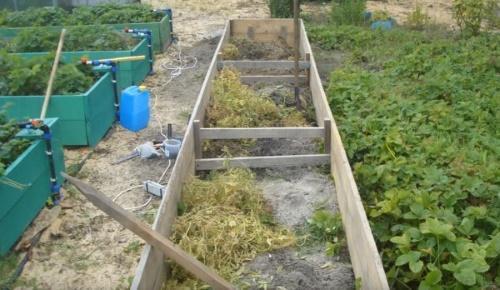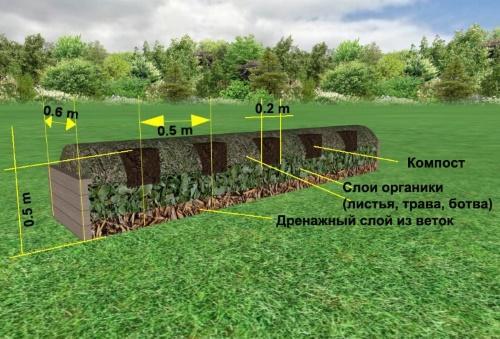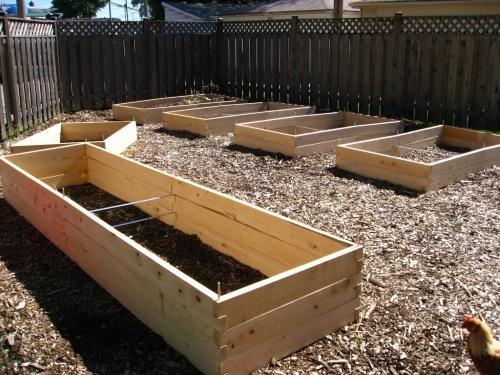Learning how to make a warm bed
 Recently, more and more gardeners are switching to growing crops in warm beds. Such structures are especially relevant in regions where autumn early declares its rights, because they allow keeping plants warm. What is their secret and how to make a warm bed?
Recently, more and more gardeners are switching to growing crops in warm beds. Such structures are especially relevant in regions where autumn early declares its rights, because they allow keeping plants warm. What is their secret and how to make a warm bed?
Benefits of warm beds
In warm beds, the soil warms up much earlier, which makes it possible to start planting earlier (up to 3 weeks). In addition, the plants on it are not afraid of return frosts, and the yield will be several times higher. In addition, you can forget about additional fertilizing of the soil for 4 years - the decomposing organic matter will do everything itself. There will be less worries with care, because weeds grow reluctantly in such a bed.
It is more profitable to start arranging the garden in the fall. Then there is a lot of plant waste, moreover, by the spring, some of them will rot.
How to make a warm bed: step by step instructions

The whole process can be broken down into two stages:
- preparation of the basis for the garden bed (box-fencing);
- filling the box.
Box making
So, the beginning of work will be the manufacture of a fence structure. It can be made from any available means:
- knock down from the boards;

- dig in slate or metal profile;

- lay out of stone or brick.

Metal material should be primed and painted, and wooden material should also be covered with an antiseptic. This will protect the resulting box from contact with moisture and extend its service life.
Regarding the size, then focus on your, as they say, taste. The bed should not be too high and wide, and the length depends only on the size of the site and your desire. It is considered optimal if the height of the warm bed is up to 50 cm, and the width is 1.2 m, but not more than 1.5 m.If there are several beds, leave a passage of at least 30 cm between them.
Do not forget to protect your future garden from rodents by laying a net on the bottom of the box.
The box can be installed directly on the ground, but keep in mind that in this case the height of the garden will be increased. To make it lower, first dig a shallow trench. Already install a box in it, or sheathe the walls with slate, or lay out with a stone.
How to fill the future warm bed?
When the base is ready, begin to form the bed, strictly adhering to the laying sequence:
- The first will be a layer (up to 5 cm) of "large-caliber" wood waste (branches, stems of large plants, pieces of wood). That is, everything that will decompose for a long time, and at the same time will serve as drainage.

- Now fill in a layer of plant debris (tops, leaves, grass).

- Cover it with a layer of rotted manure or compost.

- Fill the nutrient soil with the last layer, at least 15 cm. You can mix the excavated soil with compost and add some superphosphate.

It remains only to cover the warm bed with a film to protect against weed seeds carried by the autumn wind. And in the spring you can already plant any crops on it.